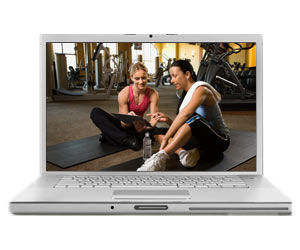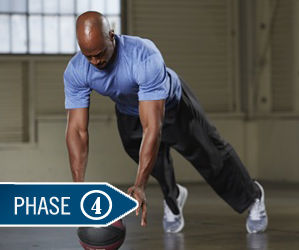
The ACE Integrated Fitness Training® (ACE IFT®) Model, which is the centerpiece of the ACE Personal Trainer Manual (5th ed.) (ACE, 2014) and is summarized in each of the other ACE manuals, is a comprehensive system for exercise programming that pulls together the many training parameters required to be a successful health and fitness professional.
There are two distinct components of the ACE IFT Model: Cardiorespiratory Training and Functional Movement and Resistance Training. Stated simply, cardiorespiratory programs have traditionally focused on steady-state training and been based on guidelines built around percentages of maximal heart rate, heart-rate reserve or oxygen uptake, or around descriptors like “moderate” or “vigorous.” In contrast, the ACE IFT Model utilizes the individual’s ventilatory thresholds to truly personalize the program’s intensity.
The two elements of the second component of the ACE IFT Model, Functional Movement and Resistance Training, have long been treated as two distinct forms of training. The ACE IFT Model instead places them along a continuum whereby the exerciser masters proper form of various movements before adding external loads.
Lance C. Dalleck, Ph.D., and his team of researchers in the High Altitude Exercise Physiology Program at Western State Colorado University put the ACE IFT Model to the test by comparing it to a more traditional approach to determine if there is a difference in how well the two programs improve fitness and cardiometabolic health.
The Study
For this study, 46 sedentary men and women between 44 and 83 years old were recruited, all of whom were considered low-to-moderate risk as defined by health and fitness industry guidelines (ACSM, 2014). All participants agreed to continue their previous dietary habits and not perform any exercise outside what was included as part of this study.
Prior to beginning the exercise program featured in this research, the participants underwent baseline measurements of a number of variables: resting heart rate and blood pressure, anthropometric measurements (height, weight, percent body fat and waist circumference) and fasting blood lipid and blood glucose. In addition, a series of functional and muscular fitness assessments was conducted. This included the stork-stand balance test to assess static balance and five-repetition maximum (5-RM) testing for the bench press and leg press exercises to assess upper- and lower-body muscular fitness.
The participants also completed maximal exercise testing during which heart rate (HR) was measured and maximal oxygen uptake (VO2max) was determined using a metabolic analyzer. Heart-rate reserve (HRR) was determined as the difference between the maximal heart rate (MHR) achieved during the test and the individual’s resting HR.
The first and second ventilatory thresholds (VT1 and VT2)—major cornerstones of the ACE IFT Model—were determined as well.
After the baseline testing was completed, the 46 participants were randomized into three groups. In addition to a control group that performed no supervised exercise over the course of the 13-week study, there were two exercise groups. The first followed the ACE IFT Model, while the second adhered to a standardized program according to current fitness-industry guidelines (ACSM, 2014). The two groups performed a similar frequency and duration of training, totaling 150 minutes of exercise per week.
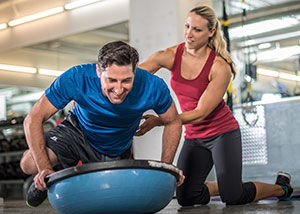 Responders and Non-responders
Responders and Non-responders
It may surprise you to learn that, while the benefits of physical activity are proven and widely accepted, there are some study subjects who do not see those benefits even when they adhere to whatever program is being used in the research in which they are participating. These participants are called non-responders.
Consider this hypothetical scenario: Ten people participate in a research study, the results of which show that they had an average weight loss of 6 pounds. This would undoubtedly be reported as a positive outcome, but the details tell a somewhat different story. In this hypothetical, seven participants lost weight (18, 13, 12, 10, 7, 7 and 3 pounds), one maintained his or her weight, and two gained weight (4 and 6 pounds)—a total weight loss of 60 pounds. The three who did not lose any weight are called non-responders. Research summaries that reach the general public will typically include only the aggregate response and fail to reveal this individual variability, which researchers know is present in interventional studies.
While there is no definitive answer just yet as to why some people don’t respond to an exercise program, it is likely that exercise intensity plays a major role. The traditional approach may underestimate intensity for some participants. “These people would not be reaching the intensity threshold needed to drive real results,” says Dr. Dalleck. On the other hand, the broad intensity ranges often used in traditional programming approaches may overestimate intensity for others, possibly leading to what Dalleck calls the “active couch potato” phenomenon. People who exercise at intensities that are simply too hard for them may tend to get worn out and be more sedentary throughout the rest of their day.
One of the goals of the research presented here was to determine whether an exercise program based on the ACE IFT Model would see a higher percentage of responders than the more traditional approach.
Cardiorespiratory Exercise
Cardiorespiratory fitness training involved the use of elliptical cross-trainers, treadmills, and arm, cycle and rowing ergometers. Members of the “standardized” group performed exercise according to a percentage of their HRR. The “ACE IFT Model” group had their programs developed based on their ventilatory thresholds. For both groups, a target HR was established that coincided with either the HRR or VT to establish a specific intensity for each session.
In the “ACE IFT Model” group, the target HR was established as follows:
- Weeks 1 through 4 (HR <VT1): HR range of 10 to 15 beats per minute (bpm) just below VT1
- Weeks 5 through 8 (HR >VT1 to <VT2): HR range of 10 to 15 bpm above VT1 and below VT2
- Weeks 9 through 13 (HR >VT2): HR range of 10 to 15 bpm just above VT2
Members of the research team adjusted workloads during each exercise session to ensure that the participants’ actual HR responses aligned with their target HR.
Functional and Resistance Training
Functional and resistance training began in week 4 of the overall study for both exercise groups and continued until the end of the program. Adherence, technique and progression were monitored by the research team.
For the “standardized” group, the resistance-training program consisted of single- and multijoint exercises performed on machines. Two sets of 12 repetitions at a moderate intensity were completed of the following exercises:
- Bench press
- Shoulder press
- Lat pull-down
- Seated row
- Biceps curl
- Triceps push-down
- Seated leg press
- Seated leg extension
- Prone lying leg curl
- Seated back extension/flexion
The resistance-training program for the “ACE IFT Model” group was designed according to ACE (2014) guidelines and consisted of multijoint/multiplanar exercises using free weights and machines that allowed for free motion. Two sets of 12 repetitions of the following exercises were performed by the members of this group. They began by using 50 percent of their 5-RM weight load and progressed in 5 percent increments every two weeks. For exercises that do not include weighted resistance, the number of repetitions performed increased by 5 to 10 percent every two weeks.
- Stability ball circuit (hip bridges, crunches, Russian twists and planks)
- Lunge matrix
- Kneeling/standing wood chops and hay balers
- Dumbbell squats to 90 degrees
- Standing one-arm cable row
- Step-ups with dumbbell onto a 15-cm step
- Modified (assisted pull-ups)
- Dumbbell bench press
Figure 1 provides a flow chart of the experimental procedures and exercise programs for all three groups.
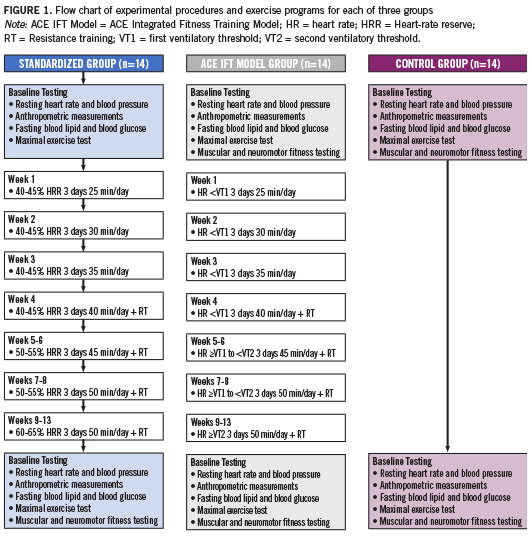
Note: ACE IFT Model = ACE Integrated Fitness Training Model; HR = heart rate; HRR = Heart-rate reserve; RT = Resistance training; VT1 = first ventilatory threshold; VT2 = second ventilatory threshold.
The Results
The physical and physiological characteristics for participants are shown in Table 1. It is important to note that the members of the three groups did not differ significantly in these characteristics at baseline. While four participants were unable to complete the study due to issues unrelated to the exercise program, overall adherence was excellent for both exercise groups.
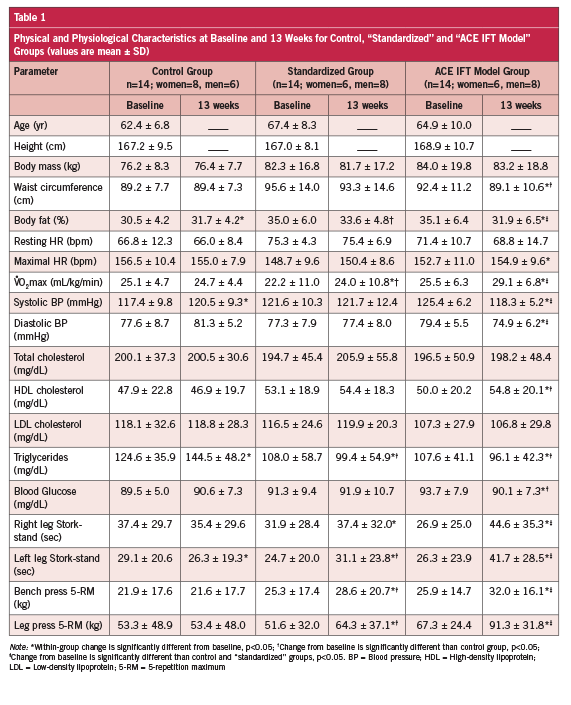
Comparing the two exercise groups to the control group: After the 13-week exercise program, there were no significant changes in body mass, resting HR, total cholesterol or low-density lipoprotein (LDL) cholesterol in either exercise group when compared to the control group.
Comparing the “standardized” group to the control group: There were significant and desirable changes in the “standardized” group in terms of VO2max, body-fat percentage, triglycerides, left-leg stork stand, 5-RM bench press and 5-RM leg press.
Comparing the “ACE IFT Model” group to the control group: There were significant and desirable changes in the “ACE IFT Model” group in terms of waist circumference, high-density lipoprotein (HDL) cholesterol, triglycerides and blood glucose.
Comparing the “ACE IFT Model” group to the “standardized” group and control group: There were significantly more favorable outcomes in the “ACE IFT Model” group in terms of changes in body-fat percentage, VO2max, systolic and diastolic blood pressure, right- and left-leg stork stand, 5-RM bench press and 5-RM leg press.
Non-responders and Responders
In the “standardized” exercise group, nine of 14 individuals (64.3 percent) experienced a positive change in VO2max (>5.9 percent) and were categorized as responders. This means that five of the 14 (35.7 percent) of individuals who adhered to this program for the full 13 weeks were categorized as non-responders to exercise training.
In the “ACE IFT Model” group, all 14 individuals (100 percent) saw a positive improvement in their VO2max. Figure 2 illustrates the individual variability in relative VO2max response in the members of the two groups.
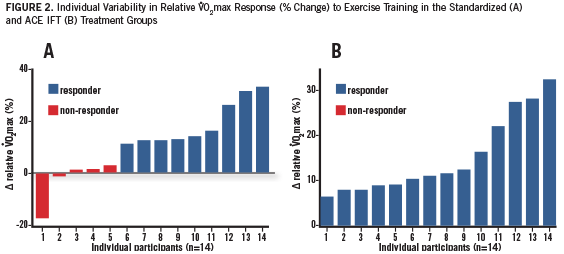
VO2max is not the only variable for which there can be responders and non-responders (Table 2).
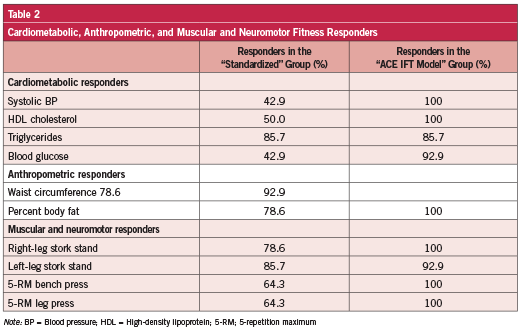
These results are extremely important for health and fitness professionals to understand. According to the results of this study, about 36 percent of individuals who adhere to a traditional exercise program will not experience the positive results they are expecting in terms of increasing their VO2max, which is a very common measure of physical fitness. Couple this with the lower number of responders in the cardiometabolic, anthropometric, and muscular and neuromotor measures and you see that there is tremendous value in individualizing an exercise program.
The Bottom Line
In addition to being potentially devastating to your reputation and bottom line, the absence of positive outcomes would no doubt lead to disappointment and potentially dropout among clients or class participants. Few things will be as discouraging to clients as doing everything that is expected of them and still not seeing results. The use of a truly individualized exercise-programming model such as the ACE IFT Model removes this tremendous barrier to success, for both you and your clients.
As summarized by Dr. Dalleck, the “ACE IFT Model” group had almost universal training responsiveness and outperformed the other groups in almost every metric. “Personalizing or individualizing the exercise program is essential,” he says. “A more cookie cutter approach will always yield less-than-optimal results.”
There were two major findings as a result of this study. First, an individualized exercise program (i.e., the one used by the “ACE IFT Model” group) elicited significantly greater improvements in VO2max, muscular fitness and key cardiometabolic risk factors when compared to a standardized exercise program following 13 weeks of exercise training. Second, an individualized exercise program increased training responsiveness when compared to a standardized exercise training program, as evidenced by the significantly reduced incidence of non-responders in the “ACE IFT Model” group. Dr. Dalleck states that “establishing exercise intensity for each individual based on his or her baseline attributes maximizes the likelihood of a favorable response to training.”
The fitness industry has long promoted the fact that we should all be moving more and that exercise is a form of preventive medicine. While that is true for the population as whole, this research demonstrates that an exercise program based on a customized approach like the ACE IFT Model will yield more benefits for more people than a traditional training model—and isn’t that the ultimate goal?
References
American College of Sports Medicine (2014). ACSM’s Guidelines for Exercise Testing and Prescription (9th ed.). Philadelphia: Wolters Kluwer/Lippincott Williams & Wilkins.
American Council on Exercise (2014). ACE Personal Trainer Manual (5th ed.). San Diego: American Council on Exercise.
Why Does ACE Sponsor Fitness-related Research Studies?
This study was sponsored by the American Council on Exercise. For more than 20 years, ACE has commissioned independent research studies from major universities and trusted partners across the country, covering everything from infomercial fitness products to the effectiveness of some of the hottest trends in health and fitness. ACE is committed to investing in these studies as part of its mission to promote the benefits of physical activity and to protect people from unsafe and ineffective fitness products and trends. You can find more information about past ACE-sponsored studies, including research on the best abdominal exercises, kettlebell workouts and Zumba, by clicking here.





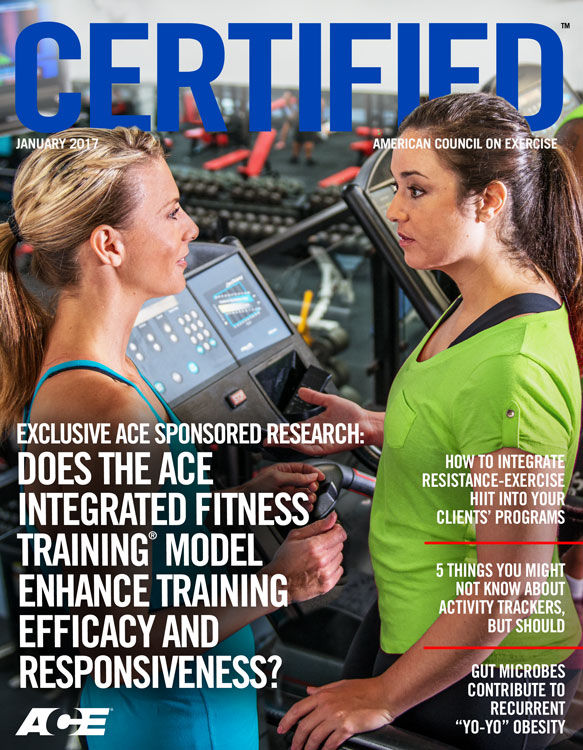

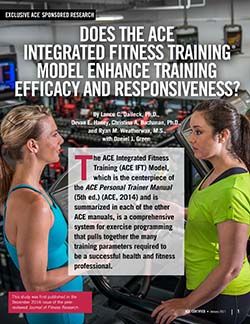
 Responders and Non-responders
Responders and Non-responders



